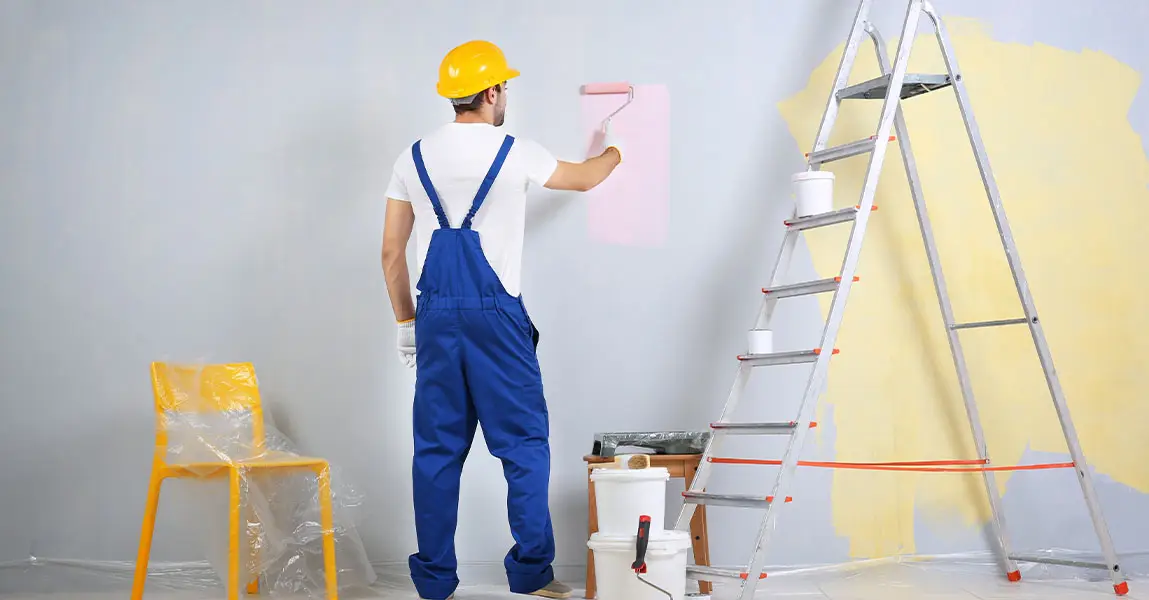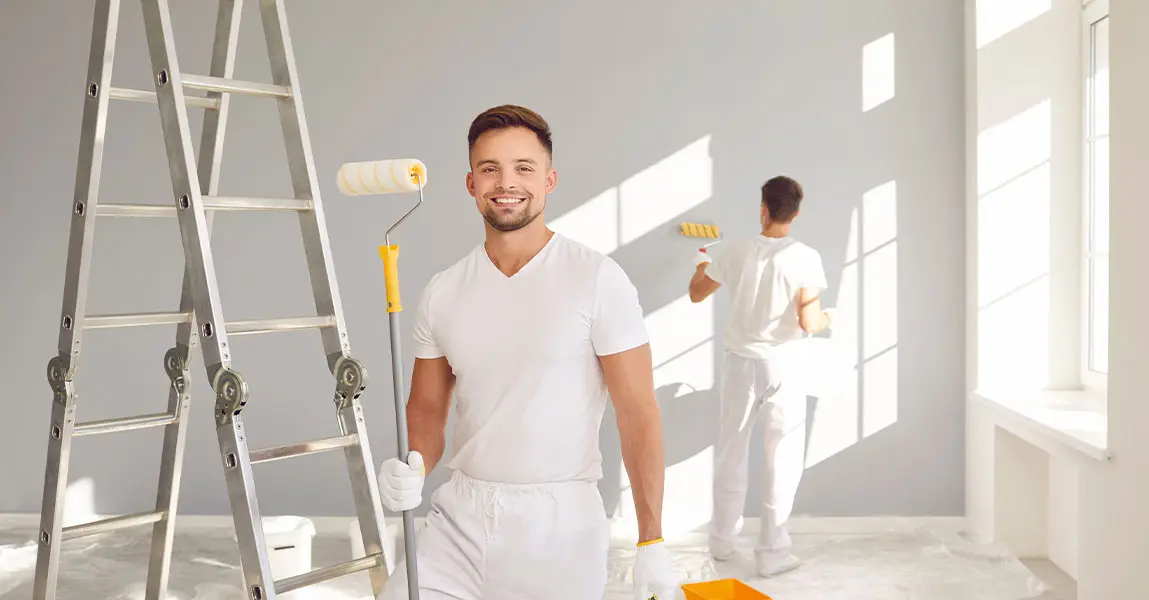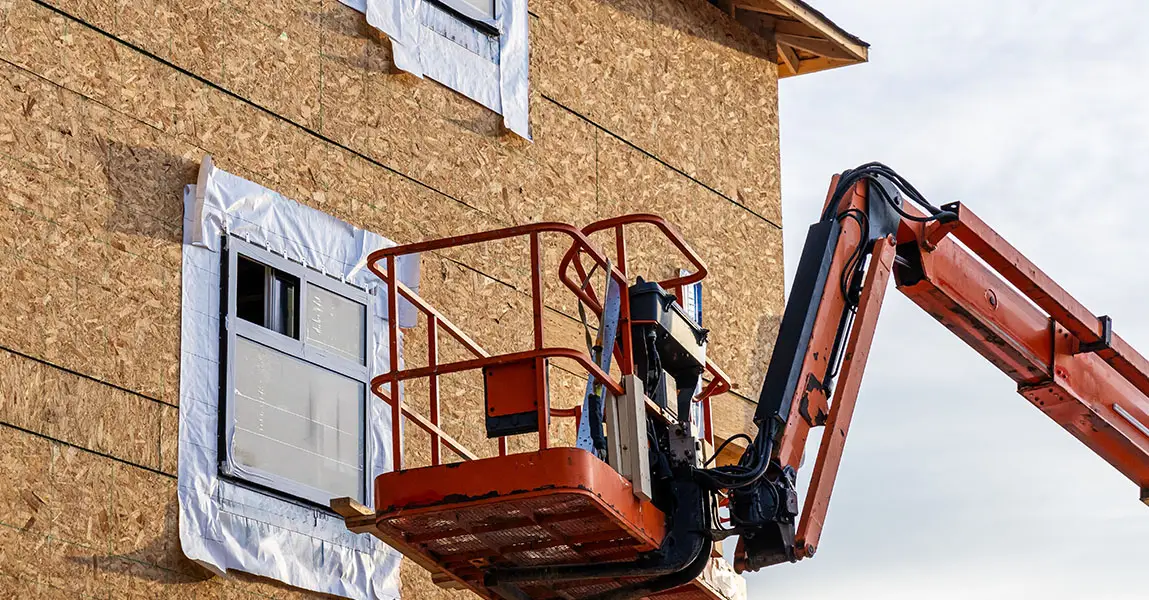When we think of exterior renovations, our minds often go to structural changes or landscaping. However, proper painting plays a vital role in transforming and protecting a building. Paint is not only about color, it also preserves surfaces, extends the life of materials, and improves energy efficiency. In this article, we will explore the practical importance of painting in exterior projects and how it supports long term results.
Preparing the Surface for Lasting Results
Any painting project begins long before the brush touches the wall. Surface preparation is the most important step, because without it even the highest quality paint will fail. We make sure to clean away dirt, mildew, and old peeling layers so the new coat adheres correctly. If this step is skipped, the finish will peel quickly and repairs will be needed sooner.
We also fill cracks, repair damaged siding, and sand rough areas to create a smooth surface. This makes the application easier and the results stronger. In other words, proper preparation protects the investment and prevents the need for early repainting. Homeowners save money and enjoy better results when surfaces are handled carefully before painting begins.
Protecting Exterior Surfaces from Weather
Weather is one of the biggest threats to building exteriors. Paint acts as a shield against moisture, wind, and sunlight. If a wall is left exposed, water can seep into cracks, causing rot or mold. A good coat of paint locks out moisture, keeping the structure safe and reducing future repair costs.
At the same time, the right product resists fading from strong sunlight. We choose paints designed to withstand harsh winters and hot summers. Consequently, the finish lasts longer and looks fresh year after year. Protecting exterior surfaces is about more than appearance, it ensures the building stays solid and durable.
Improving Energy Efficiency
The choice of paint also influences energy performance. Lighter colors can reflect heat and keep a home cooler in summer. Meanwhile, darker shades may help absorb warmth in colder climates. When paired with other improvements, painting can make a small but real difference in energy bills.
Our team considers local weather and the position of the home when planning exterior painting. This approach helps homeowners balance comfort with efficiency. Above all, it shows how something as simple as paint color can work alongside insulation and windows to create a more efficient home.
Enhancing Curb Appeal and Value
Appearance matters when it comes to property value. A clean, well painted exterior makes a home or building more inviting. When buyers or visitors arrive, the first impression often comes from the outside. That is why painting is one of the most cost effective ways to increase curb appeal.
Choosing the right color scheme highlights architectural features and blends the home with its surroundings. For instance, soft neutrals may give a classic look while bold accents bring character. Whatever the choice, a fresh coat signals care and upkeep. This not only benefits daily enjoyment but can also add real value in the market.
Selecting the Right Paint for the Job
Not all paints are created equal, and selecting the right product makes a major difference in results. Exterior paints need to resist moisture, UV rays, and temperature shifts. Some are formulated for wood, while others are better for stucco, brick, or metal.
We recommend homeowners research options and consult experts before choosing. A cheaper option may seem appealing, but it often requires more frequent repainting. Investing in the right material saves time and money over the years. In addition, environmentally friendly products are available that reduce fumes and impact without sacrificing durability.
Timing the Project for Best Results
The timing of exterior painting matters more than most people realize. Paint requires the right temperature and humidity to cure properly. Too much heat can cause bubbling, while damp conditions lead to poor adhesion.
We often suggest planning painting projects in late spring or early fall when conditions are more stable. During these times, the results last longer and the work is easier to manage. After that, regular inspection and maintenance can extend the life of the paint even further. Timing may seem like a small detail, but it strongly affects the overall success of a renovation project.
Integrating Painting with Other Renovation Work
Exterior renovation often involves multiple improvements such as siding replacement, roofing, or landscaping. Painting should be coordinated with these steps to avoid wasted effort. For example, painting before repairing siding could mean repainting again later.
We always plan painting at the right stage of the project. This coordination reduces costs and ensures the finish is not damaged by other work. It also provides a smooth, finished look once the entire renovation is complete. When painting is integrated properly, the result is a cohesive and professional finish that ties all elements together.
Long Term Maintenance and Care
Even the best paint job requires maintenance over time. Dirt, mold, and sun exposure gradually wear down the surface. Simple steps like washing the exterior once a year and touching up small chips can extend the life of the paint.
Regular inspection helps identify trouble spots early. For instance, peeling near windows may indicate a moisture issue that needs repair. By addressing small problems quickly, we prevent larger ones from developing. Long term care is what keeps a home looking its best and reduces costly future projects.
Why Experience Matters in Exterior Painting
Painting may seem straightforward, but the details matter. Professional work ensures the right tools, techniques, and materials are used for each surface. Experience allows us to handle challenges such as uneven siding, textured walls, or weather damage.
Hiring trained people also provides safety benefits. Working on ladders, scaffolding, and high walls can be dangerous without proper equipment. Therefore, leaving the job to professionals not only improves results but also keeps homeowners safe. Quality work is about preparation, knowledge, and care, all of which come from experience.
When to Seek Professional Renovation Services
Some homeowners consider painting a do it yourself project, but exterior work is rarely simple. The scale, height, and materials involved often require advanced tools and techniques. When combined with larger updates like siding or window replacement, painting becomes part of a full renovation.
If you are planning significant updates, it makes sense to work with experts who provide professional renovation services Calgary. This ensures the painting is aligned with other improvements and completed to high standards. By doing so, the investment lasts longer and the finished project looks polished.
Making the Right Choices for Your Home
Every renovation project is unique, and painting should be tailored to the specific property. The right colors, products, and methods depend on the age of the home, the climate, and the goals of the owner. We encourage people to take time in choosing, because these decisions affect both appearance and durability.
A thoughtful approach can make a home stand out while also ensuring long term protection. That is why planning ahead and asking the right questions are so important. Good choices at the start make for easier maintenance and more reliable results in the years ahead.
Practical Tips for Homeowners
We have seen many projects succeed because the homeowners took time to prepare and plan. Simple tips include choosing quality materials, scheduling work in the right season, and coordinating with other repairs. Another useful idea is to save leftover paint for small touch ups later.
It also helps to keep records of color codes and product brands. This makes future maintenance much easier and keeps the finish consistent. Small steps like these add up and help ensure that the effort and money put into painting deliver long lasting value.
FAQ
What is the best season for exterior painting?
Late spring and early fall are usually best, when weather conditions are mild and stable.
How often should exterior surfaces be repainted?
Most homes need repainting every seven to ten years, depending on climate and paint quality.
Can painting help protect against moisture damage?
Yes, a good paint job seals surfaces and prevents water from entering cracks or wood.
Does the color choice really affect energy efficiency?
Lighter shades reflect heat and keep homes cooler, while darker tones may hold warmth in cold weather.
How can I get expert help with my project?
You can contact us to discuss your renovation plans and find guidance for your painting project.











